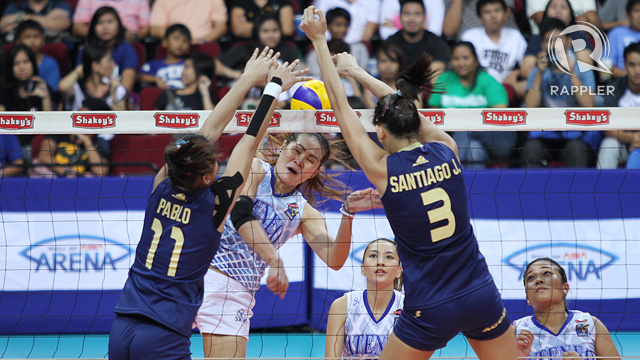SUMMARY
This is AI generated summarization, which may have errors. For context, always refer to the full article.

MANILA, Philippines — Over the weekend, a group of V-League stars were able to showcase their talents in the international stage. Carrying the Philippine flag, the crew won one and lost two matches in the first international tournament for the country in recent memory. The Filipina spikers eventually placed third, with host Vietnam sweeping the tournament after flaunting its might in the 4-nation meet.
It might not have been the result we have hoped for, but the most important things the PH V-Belles got from their participation are the experience and exposure to the international game — something badly needed in a country quickly getting crazy about the sport.
The exposure they got in this competition is crucial. It allowed Filipino fans — most of whom are just getting to know the sport in a deeper way — to know where we stand in the international scene.
Almost all of these girls have played volleyball only in the Philippines, with only a few competing overseas during their younger years. And although there is really good training and tough competition here, we cannot erase the fact that everything changes in the bigger stage. The good becomes better and the tough becomes tougher when we face national teams from other countries.
When height alone is not might
The other issue is experience. Perhaps, the biggest reason why we only won one game is that, of the 4 nations in the tourney, we have the least mileage when it comes to international tournaments.
If you could notice, Filipinos generally play a relatively slow game, but in Asia, in order to win games, a team must be able to invest on speed and floor defense. Look at Kazakhstan, who, despite fielding tall lineups year in and year out, could not sustain their success because other Asian countries expose their lack of speed.
Although height is an advantage in Asian volleyball, speed and floor defense are the strongest suits of belles from the continent. And if you would look at Vietnam in the FIVB World Championship qualifiers, you will see that the champions had the shortest roster, but still dominated the competition. The same goes for other bigger tournaments, where a small Thailand squad would blast foes with their quickness and agility.
The Vietnam experience taught us that we should give importance to speeding up our game and improving our floor defense. Back in the 2005 Asian Club Championships, I was able to interact with some Thai players, including former V-League MVP and Thai national team player Bualee Jaroensri. She said that Filipinos have a hard time defending middle attacks and because of it, they were really delivering more hits from the middle when playing against us.
Foreign help would be good, too
What we could also do is to get foreign help, like what Thailand and Vietnam do when they take advantage of invitations from other countries.
Thailand trained in China and Japan before becoming an Asian powerhouse. On the other hand, Vietnam has been seeking help from the Russians, even importing players to know their style of play. Even Indonesia has Chinese coaches and imports from other countries in their pro leagues.
Yes, we have been pulling in Thai imports for the V-League, but their help has not been enough as they only play for their teams. What we need are people who have the knowledge and desire that they can impart to our players. Like what I said, the level of volleyball understanding we have here is limited compared to other countries.
More exposure, grassroots program
Let us hope that there would be continuity in this program and that the national team would join a lot of international tournaments, no matter how big or small they are. It is through participating in these meets that we will really gain experience and learn from our Asian neighbors.
Of course, lending players would be an issue as, apparently, not all schools are keen on sending their stars to join the national squad. But with a professional league in the horizon, we might just get more seasoned spikers who have undergone stiffer competition and better training.
It could be a gold mine where we would get future national team stalwarts and would lessen our reliance on college players who are more focused on their mother leagues and, as we all know, are studying very hard to maintain high grades.
Lastly, we hope that the Philippines would have a strong grassroots program, where we could train national athletes in all age groups. In Thailand, kids as young as 10 years old are being exposed to international tournaments. That should also be the case for us if we really want to excel in the Asian scene.
With the crazy support that the sport is getting, the Philippines is primed to be one of the better Southeast Asian teams in the years to come. But of course, we need a good program to get our engine humming.
Joining the Vietnam tournament is a nice start. What is needed to be done now is to sustain this level of dedication and, who knows, we might just be at the forefront of Asian volleyball soon enough.
For the Philippines, the future of volleyball is oh-so-bright and with the sport rising to heights we have never imagined before, we can only hope for more. – Rappler.com
Add a comment
How does this make you feel?
There are no comments yet. Add your comment to start the conversation.